Sitting in the Pizza Express in King’s Lynn, trying to recover from a severe sense of humour failure. The day started well enough, and should have been very straightforward – 12.5 miles along a clearly marked public footpath along the edge of the Wash. Unfortunately, things didn’t turn out like that. I left my pub at 8am, in search of breakfast and found a greasy spoon – although I am now longing for some fruit, rather than eggs and bacon for breakfast.
I then made a detour to look inside the Minster, and very impressive it is. Some beautiful stonework as well as brasses from 14th century.
The day began overcast but looked as though it would clear up, which it did. I walked back down to the river bank and debated whether to turn south for the road bridge – a good mile each way to the bridge and back or to head for the ferry. Not having looked up the running times, I wasn’t sure if it would have started.
I opted for the ferry and was pleased to find it was already operating, although I missed one by a few minutes. However the ferryman is pretty brisk, and although the vehicle itself looks pretty clapped out, it does the job swiftly enough.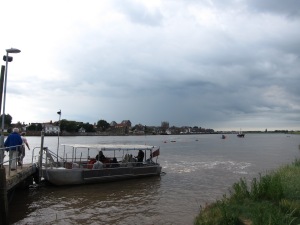
I landed at West Lynn in a few minutes, and had a look at the little exhibition about the draining of the fens before starting out on the Peter Scott Way.  I had never heard of this path before which runs from the ferry at West Lynn to Sutton Bridge, along the edge of the Wash. The sun was shining by now, with very little wind, and I was already glad of my hat. I sauntered on, making good time, and at around eleven decided to stop for 10 minutes to eat some chocolate and admire the view.
I had never heard of this path before which runs from the ferry at West Lynn to Sutton Bridge, along the edge of the Wash. The sun was shining by now, with very little wind, and I was already glad of my hat. I sauntered on, making good time, and at around eleven decided to stop for 10 minutes to eat some chocolate and admire the view.
That 10 minutes cost me hours! I sat looking across the Wash back towards Snettisham where I had been yesterday, before my Sandringham jaunt. I contemplated the day ahead – easy walking, an unmistakeable route and no farm animals. I couldn’t have been more wrong!
Ten minutes later I approached a building that I had been able to see for some mile or so. I had thought it was an electricity substation, but as I got closer I saw it was a barn. I had no sooner registered this fact than a herd, or I might say a horde, of at least forty head of cattle poured out of the barn and stampeded up the bank. They were young male beef cattle, and presumably normally run down the other side of the bank to pasture on the grassy marsh edge.
To my utter dismay, they caught sight of me, not 50 yards away and the leaders stopped dead on the bank. Most of the rest followed them and I was faced with a herd of cattle and no way round. Now, I am not wild about passing cattle at the best of times but generally, if they are grazing quietly, I can slip through without drawing attention to myself. There was no hope of that – they were curious, very curious, and whilst aggressive might be strong, they certainly weren’t friendly.
I yelled out in the hope that the farmer was there and had just let them out – he could have chased them off for me. But there was no-one there. Presumably they just go in and out of the barn at their leisure.
I contemplated my options. There was no way I could go through them. I could go to the right down the bank and into the marsh but I didn’t know how tricky that would be. Besides, I would have had to cross their normal path. I considered going left between them and their barn. That didn’t seem too appealing either as there were still some left in the barn and I didn’t want them rushing out. The third option was to go behind the barn and wait until they had lost interest. I slithered down the bank to the left and hopped over the five barred gate. It is amazing how swiftly I can move in these situations. I thought that if I hid for a bit, they would move off the bank, but no. Not a bit of it. I waited for a good fifteen minutes, but every time I emerged into view they would start to bellow.
Behind the barn was a large wheat field. I thought of walking along the edge of it, at the foot of the ridge, but the cows were still way too close for comfort. I looked at the map and decided I should walk the half mile down the farm track, at right angles to the ridge, then run parallel with it and either cut back to it, or follow a ridge further inland that had been the 1910 water front. So, off I went. Every time I looked back, the cows were still clustered on the ridge.
I got to the beginning of the next field – wide, open, East Anglian fields at least quarter of mile in length and width. I could see that there was a gate across the ridge footpath, so I thought I would cut back up, and climb back onto the path with the gate between me and the cattle. First mistake.
The crops are pretty high now, and reached above my head. I kept close to the field which was not sown, but it was very tall grass, and cleevers everywhere, entangling themselves in my boots. I startled a few pheasants, but pushed on. I could see, as I approached the ridge that there was a wire fence, but I was pretty sure I could make short work of that. Imagine my horror when I found, not just a fence but a very wide drainage ditch, running parallel to the path which I couldn’t possibly cross. I looked at the map – sure enough, it was marked, but I had not checked carefully enough. Cursing, I decided to walk along the top of the field, which looked a bit less overgrown and down the other side to reach the 1910 ridge, rather than fight my way back down the way I had come. Second mistake – the field became even more overgrown. It must have taken the best part of an hour to get round the field and then, when I finally got to the 1910 ridge, that was so overgrown I couldn’t possibly walk on it.
The net result was that I had to walk all the way to Sutton Bridge on the road, with no sight of the sea. My socks and boots were full of burrs and cleevers and every step was prickly. Eventually, I bethought me of yesterday’s socks, dug into my rucksack and put those on – not that pleasant, but better than burrs. The road was at least four extra miles as well.
My only piece of luck all day was coming into Sutton Bridge, and reaching the bus stop just as the bus was trundling up the road.

 espass of course, but I am not sure how I could have avoided it.
espass of course, but I am not sure how I could have avoided it.

 have cried. However, that was unnecessary as he was very kind and polite and II was very glad not to have to make a detour of several miles.
have cried. However, that was unnecessary as he was very kind and polite and II was very glad not to have to make a detour of several miles.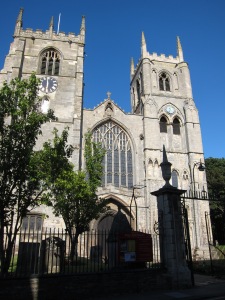
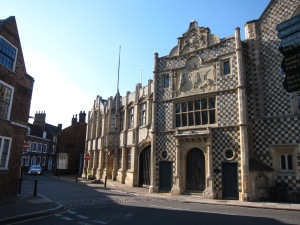
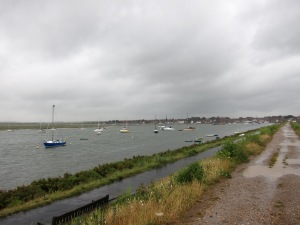
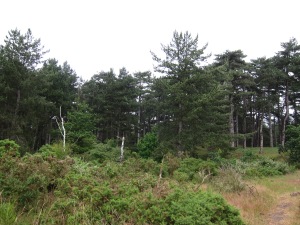




 me today.
me today.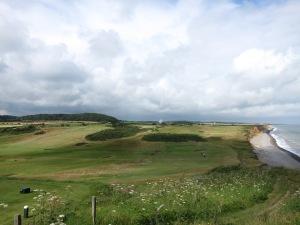 ked for about four miles on the cliff path. As well as the sky larks, we saw plenty of butterflies and also seven spotted burnet moths.
ked for about four miles on the cliff path. As well as the sky larks, we saw plenty of butterflies and also seven spotted burnet moths.